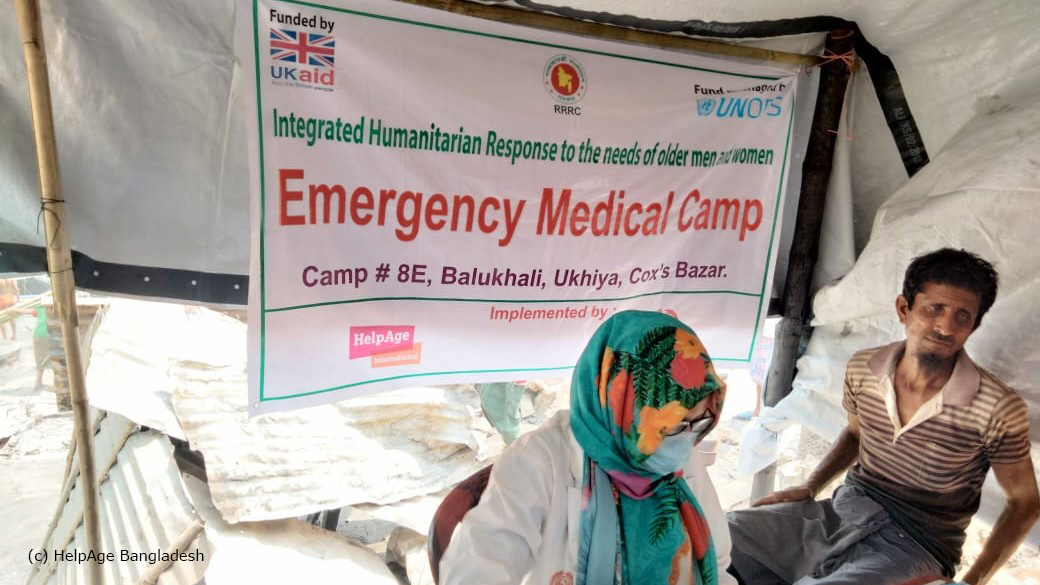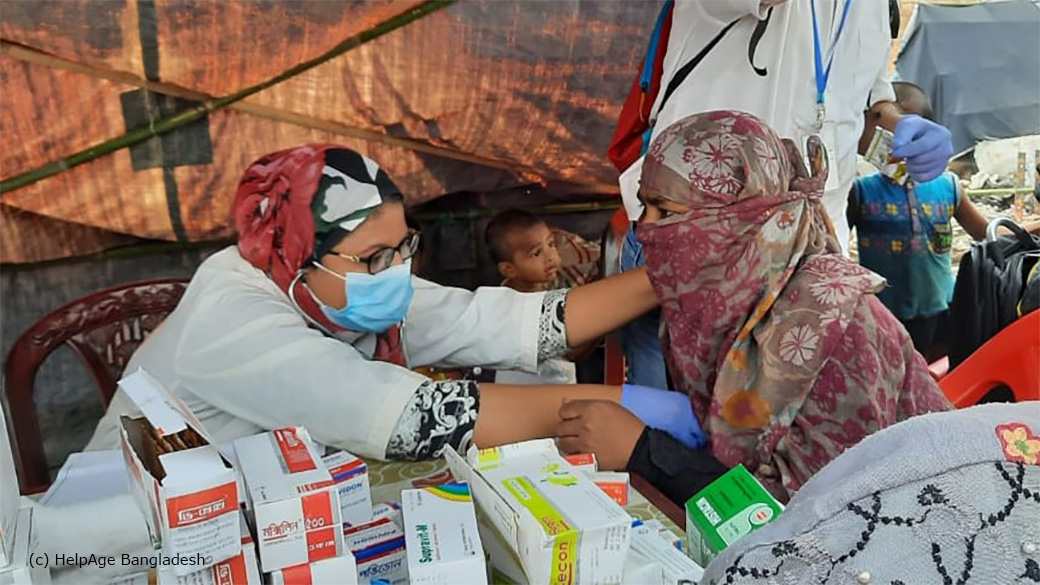Thousands of older people have been affected by the massive fire that ripped through the camps in Bangladesh’s Cox’s Bazar, the densely populated refugee camp that is home to more than one million Rohyinga refugees.
The fire destroyed people’s shelters as well as water points, toilets, bathing facilities, health services and prayer places. A mass relocation is now underway at Cox’s Bazar, including for older people and people with disabilities.
Five percent of those affected by the fire are older people, amounting to around 2,000 women and men, according to a Rapid Needs Assessment (RNA) conducted by HelpAge and its national partner, RIC. This includes 615 households, home to 776 older people and 38 people with disabilities, who HelpAge works with in the camps.
“Life in the Rohhyinga refugee camps is already incredibly difficult for older people, many of whom struggle to get around. Our staff and are partners are already doing everything possible to help affected older people cope with the immediate aftermath of the fire, but action must be taken to ensure that age friendly services are provided to those who will have been traumatised, injured and left homeless by this horrendous fire,” said Jahangir Alam, Head of Party for HelpAge International in Bangladesh.
Older people with injuries or disabilities were unable to get away quickly from the fire as it swept through the camps and were left dependent on help from caregivers. Some were severely injured as people scrambled to save what meagre possessions they owned. Many had their escape delayed as they had to cut through wire fences, which wounded a huge number people.
Most of the older people and those with disabilities who escaped with the help of caregivers, found themselves isolated from their family and having to take shelter at the roadside or in overcrowded spaces, without the normal support they rely on. They had had no time to gather what few possessions they owned, leaving those needing help with their mobility or medical care at particular risk.
HelpAge Response
HelpAge has been working with its partners to deliver an emergency response and provide help for those in need of support.
In the immediate response, trained community volunteers were involved in search and rescue and providing first aid support.
HelpAge has despatched three mobile medical teams to one of the camps destroyed by the fire, Camp 8E, where it already has an active programme of work. They have been providing psychosocial counselling, physiotherapy treatment and medication, and referring burn cases on for further treatment.
They are also working with other humanitarian actors to develop accessible services.
Partner organisations are ensuring that accommodation and food are made available, and safe Age Friendly Spaces have been opened to those affected at nearby Camps 11, 12 and 18.
There is an urgent need for continued emergency support including rebuilding accommodation, nutritional food, household items, sanitation facilities that can be accessed by older people and those with disabilities, medication, physiotherapy, psychosocial counselling, and assistive products.


HelpAge International already had an active programme of work in one of the four camps destroyed by the fire – Camp-8E – where most of the huts were burned to ashes. These four camps provided shelter for more than 122,000 people in 27,000 huts.
According to the site management agency (DRC) of Camp 8-E, 15 people died, 560 were injured, 400 are still missing, and 10,000 families were displaced along with 45,000 individuals. Approximately 10,000 shelters were damaged including six health facilities.
